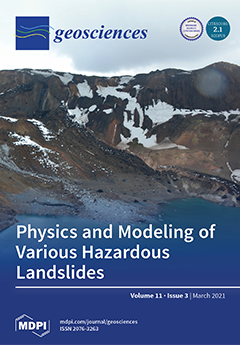Offshore the emissions of dihydrogen are highlighted by the smokers along the oceanic ridges. Onshore in situ measurements in ophiolitic contexts and in old cratons have also proven the existence of numerous H
2 emissive areas. When H
2 emanations affect the soils, small depressions and vegetation gaps are observed. These depressions, called
fairy circles, have similarities with the pockmark and vent structures recognized for long time in the sea floor when natural gas escapes but also differences. In this paper we present a statistic approach of the density, size, and shape of the
fairy circles in various basins. New data from Brazil and Australia are compared to the existing database already gathered in Russia, USA, and again Brazil. The comparison suggests that Australia could be one of the most promising areas for H
2 exploration, de facto a couple of wells already found H
2, whereas they were drilled to look for hydrocarbons. The sum of areas from where H
2 is seeping overpasses 45 km
2 in Kangaroo Island as in the Yorke Peninsula. The size of the emitting structures, expressed in average diameter, varies from few meters to kilometers and the footprint expressed in % of the ground within the structures varies from 1 to 17%. However, globally the sets of
fairy circles in the various basins are rather similar and one may consider that their characteristics are homogeneous and may help to characterize these H
2 emitting zones. Two kinds of size repartitions are observed, one with two maxima (25 m and between 220 m ± 25%) one with a simple Gaussian shape with a single maximum around 175 m ± 20%. Various geomorphological characteristics allow us to differentiate depressions of the ground due to gas emissions from karstic dolines. The more relevant ones are their slope and the ratio diameter vs. depth. At the opposite of the pockmark structures observed on the seafloor for which exclusion zones have been described, the H
2 emitting structures may intersect and they often growth by coalescence. These H
2 emitting structures are always observed, up to now, above Archean or Neoproterozoic cratons; it suggests that anoxia at the time the sedimentation and iron content play a key role in the H
2 sourcing.
Full article





